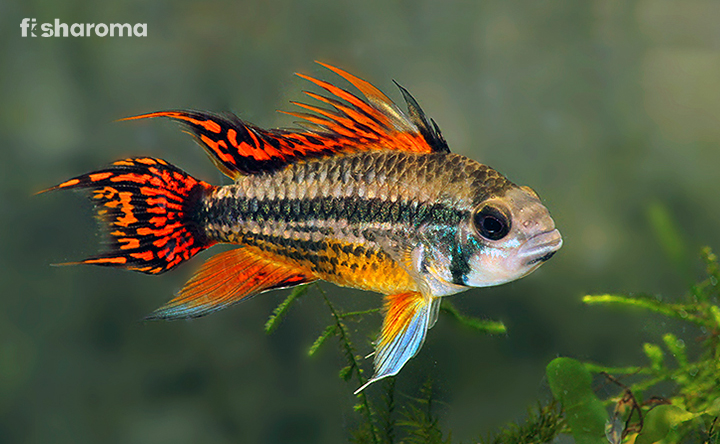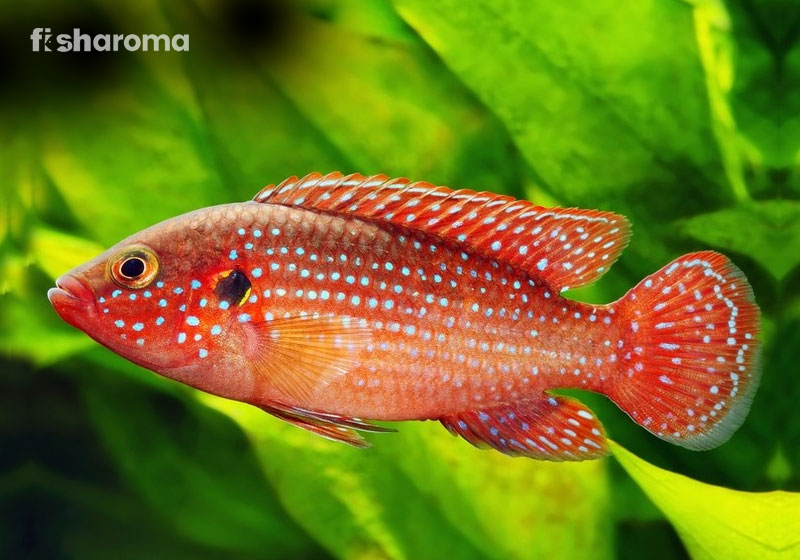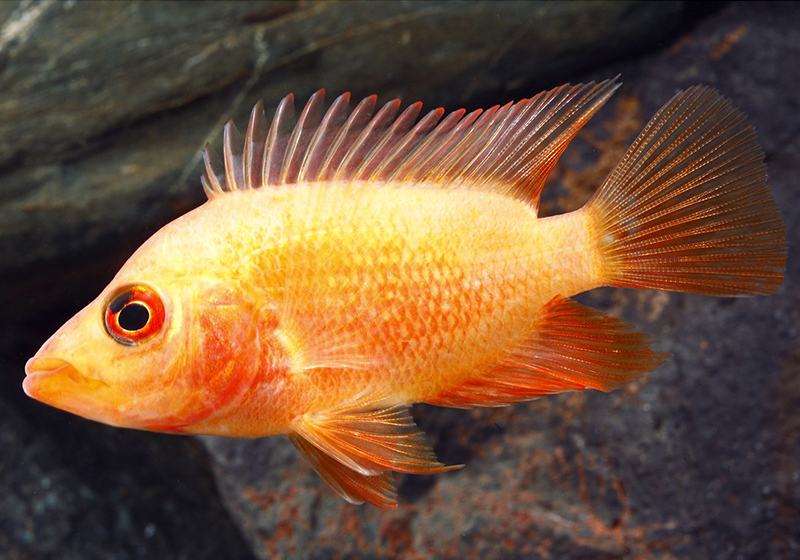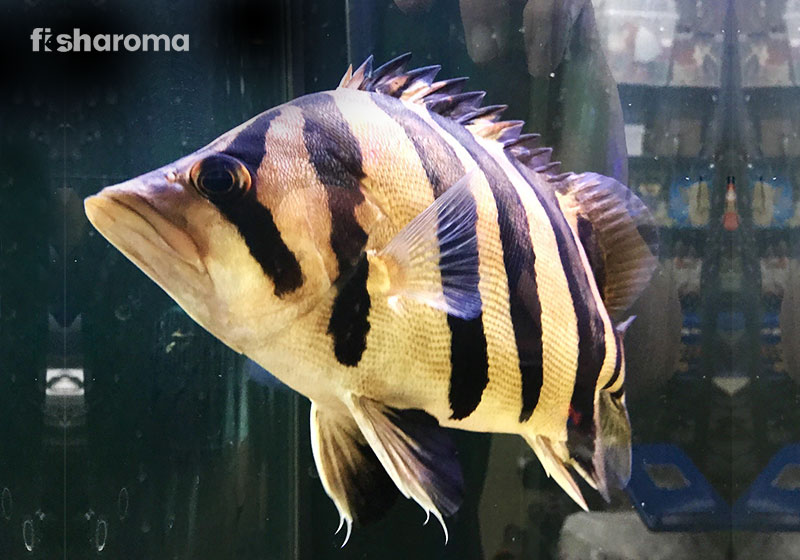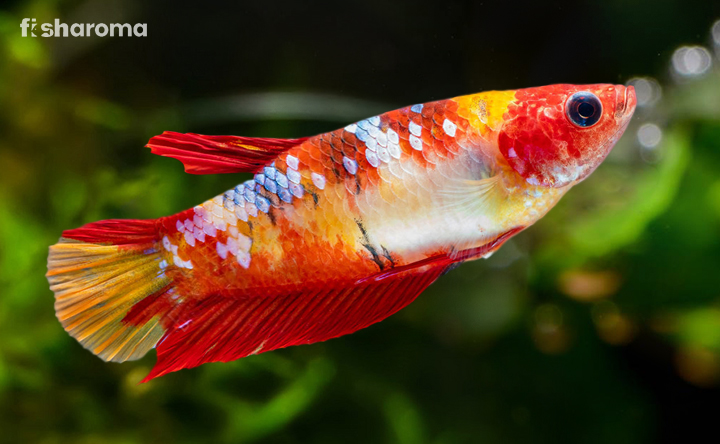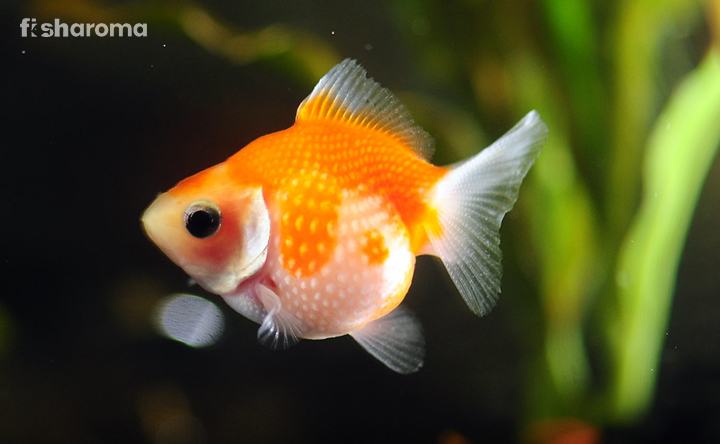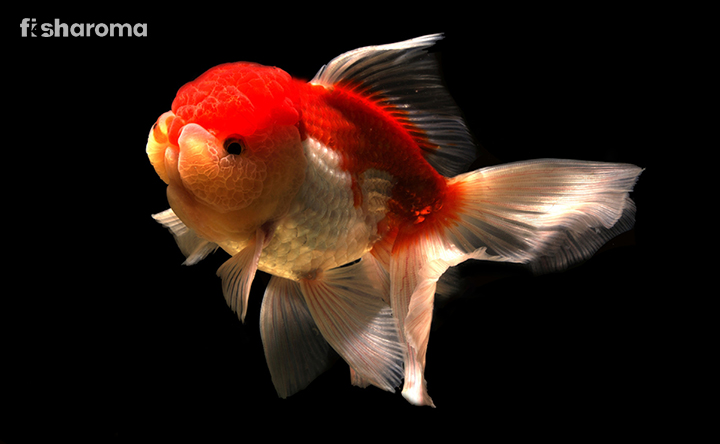Kribensis Cichlid- A Care Guide To Our Rainbow Krib
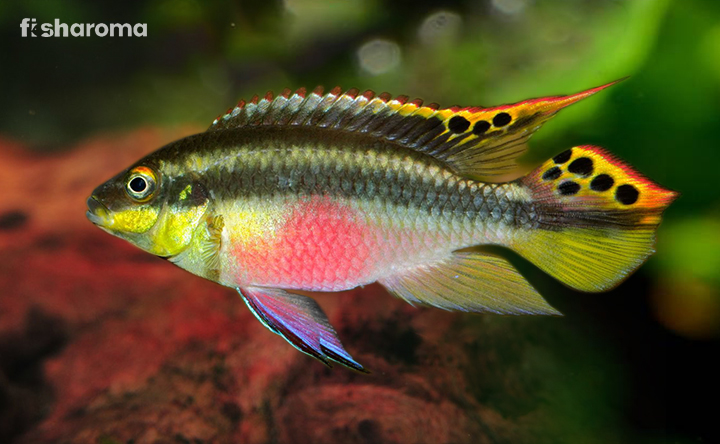
- Origin & Habitat of Kribensis Cichlid
- Appearance of Kribensis Cichlid
- Behaviour of Kribensis Cichlid
- Lifespan of Kribensis Cichlid
- Diet of Kribensis Cichlid
- Tank Requirements for Kribensis Cichlid
- Water Type for Kribensis Cichlid
- Compatibility of Kribensis Cichlid
- Breeding of Kribensis Cichlid
- Diseases of Kribensis Cichlid
- Summary
The Kribensis Cichlid, from the genus Pelvicachromis, is a fish of beauty and balance. The fellow members of the Cichlidae family come with a stacked price or aggressive temperaments. However, this fickle mishmash of fishes do have their balanced exceptions as this one.
This vibrant and mostly peaceful Cichlid breed is everything you need in your tank. Not only do they offer mesmerizing visual appeal, but these Kribs also are the most protective parents out there. Easy to care for, let’s hook you up with everything you need to know in this complete care guide if you’re planning ownership of these freshwater wonders.
Key Specifications
Some quick intel on these beauties:
| Scientific Name | Pelvicachromis pulcher |
| Origin | Nigeria and Cameroon. |
| Lifespan | 5 years in captivity. |
| Colours/Patterns | Green, blue, red, yellow morphed together. |
| Temperament | Mostly peaceful (Territorial, Aggressive instincts while protecting their fry) |
| Size | 4 inches |
| Diet | Omnivorous |
| Family | Cichlidae |
| Compatibility | Other bottom dwellers of similar type and size. |
| Tank size | 50 gallons |
| Care level | Easy |
| Water preference | Freshwater |
| Breeding | Egg-layer |
Overview
This beautiful Cichlid fish is also known by several names like Niger Cichlid, Purple Cichlid, Pallete Cichlid, Rainbow Krib and King Cichlid. All these other names talk very highly of the rainbow-like vibrancy this majestic breed has to offer. The Kribensis are beautiful freshwater fishes, who can easily live up to half a decade in captivity. With a pretty small size and easy care level, this fish is a good choice for your aquarium. These Kribs are probably the most protective parent fishes out there, which is a very interesting instinct to witness. (More on that in the breeding section)
Origin and Habitat of Kribensis Cichlid
Kribensis Cichlid fishes in the aquarium trade are known as Pelvicachromis pulcher (P.Pulcher). The translation from Latin language talks about the female’s vibrancy in the belly region. To break it down, the plural of Pelvis is “Pelvica”, “chromis” is fish and finally, “pulcher” means beautiful.
However, their true identity has always been a matter of debate. In more scientific terms, they are actually called Pelvicachromis taeniatus for being a single species. So, there is always a matter of confusion on this particular matter.
Moving on, these Cichlids are from South Nigeria. Especially the drainage area of African waters like River Ethiope in the Nigerian Delta region, is where they are mostly found. This usually has mixed water conditions, which is not really a problem for this hardy breed. Other than that, they are also found in the Coastal regions of Cameroon.
In the wild, the water conditions the Kribensis Cichlids reside in is brackish. However, it is good not to have this as a parameter, around the time of their breeding. They prefer their waters soft and acidic as it emulates their natural habitat. The vegetation preference is heavy with shallow waters, where slow or fast currents work just fine.
Appearance of Kribensis Cichlid
The Kribs have a slender shape, good length and a round head which is typical of a classic Cichlid. From all the names like Pallete Cichlid or Rainbow Krib, it is evident that their colours speak volumes. They look like actual rainbows in your aquarium!
Colour
They have base colours ranging from and between, grey to white. There is a visible black accented stripe that optically splits the body into two fine halves, starting from eyes to tail. The top of their head is seen to have a black tint.
However, in its Latin name, the translation is “beautiful belly” as the female variant possesses a beautiful cherry-red, or pinkish colouration in their belly region. If you take a closer look at the fins you will see beautiful yellow colouration, blending with red or orange and blue.
The Albino Kribensis Cichlid is a colour variant of Kribensis. In this type, the body consists of a beautiful cherry-red coloured belly region and an overall pale-white base due to lack of melanin.
In some fishes, the caudal and dorsal fins also have a gold ring-like concentric patterns, almost resembling an eye. The fins are purplish or a colouration almost bluish around the pectoral and anal region. A greenish tint is precisely visible on the gill plate. All of that combined looks like an illusion, or even a painting!
Size
These freshwater beauties are relatively small fishes, growing just about 4 inches.
Behaviour of Kribensis Cichlid
The Kribensis Cichlid fishes are generally peaceful fishes, which can be placed with ease in a community tank. But, they are not entirely peaceful as there are clear signs of territorial behaviour and aggression around the time of breeding. Especially, when they think any other fish or species could be a potential threat to their fry. Sometimes, with concentrated violence, if need be, these fishes interestingly turn out to be amazing as parents.
To solve it all, it’s good to keep them in a species-specific tank or no pairings at all in the community tank. Another way a better balance of possibilities could be easily achieved is when there are two same-sex fishes (preferably females) included in the community tank, in case you do not prefer to keep them solo.
The Kribs are quite hardy, so they are comfortable with most parameters. They are ideally bottom-dwellers, so provided there are enough resources, they can co-exist with ease.
Lifespan of Kribensis Cichlid
The lifespan of this wonderful species is usually up to 5 years in captivity. Still, if the water conditions are not maintained with care or they are not properly looked after, their life would be cut short.
Diet of Kribensis Cichlid
These Omnivorous bottom-dwellers are not that hard to feed and would accept a wide range of food items to feed on.
Let us present you with a healthy menu for our precious Cichlids:
- Frozen food items
- Dried food items
- Live fish food items
Wafers, flakes and pellets are accepted by them from all of the above variants. Cichlid pellets are also very good for them.
Other important choices:
- Daphnia
- Bloodworms
- Brine Shrimp (Freshly hatched, frozen)
- Mosquito Larvae
Vegetarian choices:
- Zucchini
- Cucumber
Tank Requirements for Kribensis Cichlid
Tank requirements are of massive significance. Keeping the scenario intact is necessary for the fish’s health. The conditions you keep your fishes in, reflects upon the fish’s health. So let’s see exactly what you need to check:
Tank Lid
The Tank lid plays a huge role when it comes to protecting the fish in many possible ways. The Kribensis Cichlid are known for their strong swimming. It is a high possibility that they will fall out if not provided with a stable tank lid. Otherwise, a tank lid protects the water from pollution, as a result of exposure to potentially harmful foreign elements.
Tank Size
These Kribs need a tank size of at least 50 gallons to thrive.
Substrate
From close observation, the Kribensis Cichlids seem to really like their substrate colour to be on the darker side, preferably black. Fine sand or small gravels work really well for them. They have tendencies of making pits by digging through the layer of substrate, so large gravel can’t support that.
Filter
These beautiful Cichlids are usually more sensitive to ammonia and nitrates, so a strong filter is really appreciated in a Kribensis Cichlid tank. Your filter should not only be strong enough, but properly enrich the tank water with oxygen(oxygenation).
Ornaments
Kribensis Cichlid fishes are big fans of sweet hiding spots like caves. They basically love these spots at the time of breeding. Throw in some cute rocks, shells of coconut, driftwood or subtle additions without overcrowding the tank. All of that should work harmoniously for your tank, in terms of both aesthetic and comfort.
Lighting
These Palette beauties are not really that particular about lighting, so moderation in the intensity of their tank lighting should be perfect.
Presence of Flora
Yes, they are one of the dense vegetation lovers. Stack their tank up with all nature has to offer. Add plants like:
Do keep one thing in mind, that although these fishes don’t eat plants, but uprooting behaviour can still be noticed. Be smart while placing the layer of vegetation in their tank.
Cleaning Method
A proper cleaning method is very important. If you don’t keep the tank clean or replace the water from time to time, you can actually make your water pet exposed to severe danger. So don’t forget to always have a look at the parameters, replace the tank water from time to time, clean the tank walls and get rid of all pollutants. Other than all these important points, do clean the components you use in your tank like filters, aeration systems or others.
Water Type for Kribensis Cichlid
Keeping the water profile intact is more important than you think. So for that, you need to be careful of each and every parameter so linked.
Let’s see what we exactly need to keep in check:
| Hardness | 5-20 dGH |
| Temperature | 23-26 Degrees Celsius |
| pH | 5.0-8.0 |
Hardness
It’s true that the Cichlids are well-known for their love of hard water with alkalinity. Kribensis Cichlids evidently have a wide range when it comes to their general hardness. The range is 5-20 dGH, but harder alkaline waters bring out their true vibrancy.
Temperature
Water on the warmer side within 23-26 Degrees Celsius is ideal for our Rainbow Kribs.
pH
These Cichlids love a pH close to 8.0. However, they can deal with a range of water parameters, where the bottom-line in pH can be as low as 5.0.
Compatibility of Kribensis Cichlid
Under normal circumstances, the Kribensis Cichlids are a very shy but friendly type. They have good synergy with similar breeds and don’t really mind sharing the tank with most breeds.
To be kept in mind, they are massive fin nippers. So, it is hard to avoid their chase to nip fishes with majestic long, flowy fins. Especially around the time of spawning, their aggression and territorial instincts reach its peak. So keeping all these things in mind, pairings need to be done accordingly.
Suitable Tank mates
Let’s see some buddies who can exist harmoniously with these rainbow beauties:
- Tiger Barb
- Siamese Algae Eater
- Congo Tetra
- Harlequin Rasbora
- Apistogramma
- Corydoras Catfish
- Dwarf Cichlid (other variants)
Unsuitable Tank mates
Avoid flowy finned, large and aggressive fishes. So keep that in mind and let us hook you up with some mates that are never a good idea with these Cichlids:
- Emperor Cichlid
- Convict Cichlid
- Discus
- Wolf Cichlid
- Jack Dempsey
- Amano Shrimp
- Whisker Shrimp
- Ghost Shrimp
- Snails
Breeding of Kribensis Cichlid
Kribensis Cichlids need shelters or proper well-hidden spots to breed. This makes the fish feel comfortable, naturally preventing stress. There are two known convenient ways to breed our Rainbow Kribs:
Breeding Tank
To have a dedicated tank just for the purpose of breeding is always a good way. Tanks of this nature with optimum size (approx. 20-40 gallons) have only one purpose, breeding. Safe removal of the fry is more smooth this way, following which the parent fishes can breed again without any stress or hassle. Make sure you have the proper set-up components like a heater, dark substrate, pH around 7.0 and hardness remains the same (5-20 dGH).
These Cichlids are really hardy, capable of surviving multiple variations, but breeding-time is delicate. Sudden variations in parameters, especially the pH can really stress the fish out and affect their health. Make sure you don’t compromise their immunity in any way and be really careful while opting for this way.
Fry Tank
This is also a very good way to carry out the process of breeding. Basically in this case, instead of having a tank exclusively for breeding, you have a separate tank for the fry. Allow the process of breeding to happen in the hidden spots of your tank. As soon as the process has reached completion, safely remove the adorable baby fishes after their surface-level nourishment has been achieved by the parent fishes. In a separate tank, care for them.
Don’t forget to provide them with nutrition and regulate the tank conditions accordingly. Make sure you keep a lookout for Egg Fungus or similar complications, that can affect the eggs in your blindspot in the caves.
Now let’s have a look at how the process works:
On-set of the Breeding Process
Kribensis Cichlids, usually at the time of breeding, tend to form a pair with an even ratio. In simpler words, they come in pairs of one male and female, breed and prefer raising their fry together. The female can have up to 50-300 eggs at a time deposited in one of their hiding spots, like caves. The male fertilizes them afterwards.
When it comes to guarding the eggs, the parents alternate their timings, to allow each member involved to feed. They are visibly very protective as parent fishes, as they will do the most to defend their little fry. The Kribs would go as far as being aggressive for protection, which is not their typical behaviour in any way.
Hatching
The female fish’s colouration reaches its peak around the spawning season, especially the belly. However, the eggs hatch within as quick as 3 days to hatch. We recommend you to feed the juveniles with liquid food specially made for the fry. It is certainly the best possible option for them. Otherwise, you can provide them with foods like microworm, baby brine shrimp, infusoria, vinegar eel. Just make sure they are small enough to be fed and have enough nutritional content required for the fry’s growth.
Diseases of Kribensis Cichlid
As we already know, Kribensis Cichlids are hardy. As long as the conditions and parameters are looked after, they do just fine. They have a huge range of tolerance levels to offer, so they are factually tough.
Still, low oxygen levels, lack of hygiene, sudden alterations or uneven parameters, under or over-feeding and similar issues will make any fish susceptible to fatal diseases.
Other than all these major reasons, then there is stress. It is definitely more serious than the sound of it, as stress can prove to be very harmful for the fish overall.
Still, let us provide you with a brief idea of the diseases that can affect our precious Kribensis Cichlids:
- Ich- The “White Spot Disease” as we know it. Known by the name of Ichthyophthirius multifiliis or “Ich”, is caused by a parasite. It’s deadly to most freshwater aquarium fishes.
- Skin Flukes– Caused majorly from a protozoan or worms, affecting the fish’s skin.
These Purple Cichlids are prone to most freshwater fish diseases. It usually happens as a result of parasites, bacteria, protozoan, worms or fungi.
Treatment
Some ways of treatment and prevention are as below:
- Copper-based medication for the treatment of the White Spot Disease or Ich is our prime recommendation.
- Do not forget to isolate the ill into a separate treatment tank.
- Observe your precious pets well for early detection of illness signs.
- Elevate the tank temperature with the hand-picked diseases that can be healed with an increased temperature.
- Contact a professional immediately when the situation is beyond home treatment.
- Don’t overfeed or underfeed.
- Keep the tank clean and well-looked after. Make sure the requirements are properly met and nothing is out of place.
Summary
To see it conclusively, the Kribensis Cichlids are magnificent beings with immense beauty and grandeur. The rainbow-like appearance of these Purple Cichlids is truly a treat to one’s optic nerves. Apart from their visual appeal, it doesn’t really require someone with prowess in the hobby to take care of them. Thus, their care level is easy.
The flexibility in that mainly roots from their hardy self, and all these factors just turn out to be a win-win for anyone who owns them. So why shouldn’t you? Get your precious school of Kribensis Cichlid fishes right now, they are a no brainer in our opinion.
Similar Care Guides
- Blood Parrot Cichlid Care Guide: Similar to the Central American Cichlid, these Cichlids are exquisite beings from the Cichlidae family. They grow up to 8 inches! Know more right here.
- Peacock Cichlid Care Guide: This extraordinary freshwater Cichlid shares a similar temperament with our Kribs. However, their territorial instincts activate on constant irritation. Get intel on them, right here!
- Firemouth Cichlid Care Guide: These beautiful Cichlids are easy to care for with a high compatibility level. Plus, they live for up to 15 years! To know further, click here!

